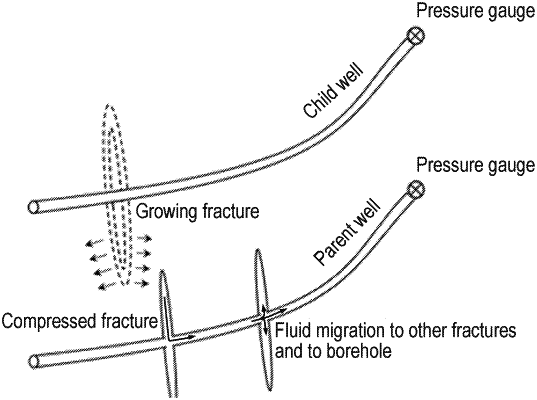| CPC E21B 43/26 (2013.01) [E21B 47/06 (2013.01); G06F 30/20 (2020.01); E21B 2200/20 (2020.05)] | 8 Claims |

|
1. A method of predicting and preventing an event of fracture hit during stimulation treatment of a formation, the method comprising:
a) providing a well production pad with a parent well with completed fractures and a child well with a growing fracture;
b) providing formation data, parent well data, and a child well fracture job design for a child well fracture job, wherein the child well fracture job comprises a fracturing operation in the child well;
c) generating a model that models a transfer of fluid, pressure, or both, between the parent well and the child well;
d) simulating, via the model, a set of precalculated pressure scenarios for the child well fracture job design;
e) identifying one or more fracture hit scenarios in the set of precalculated pressure scenarios from stage (d), wherein the one or more fracture hit scenarios are indicative of direct fluid communication between the parent well and the child well;
f) performing, in the child well, the fracturing operation of the child well fracture job according to the child well fracture job design;
g) monitoring pressure data in the parent well and the child well during the performance of the fracturing operation in the child well;
h) matching the pressure data for the parent well and the child well with the one or more fracture hit scenarios from the stage (e);
i) if matching of the one or more fracture hit scenarios with pressure data is positive, stopping the child well fracture job; and
j) if matching of the one or more fracture hit scenarios with pressure data is negative, continuing the child well fracture job until the child well fracture job is finished according to the child well fracture job design.
|